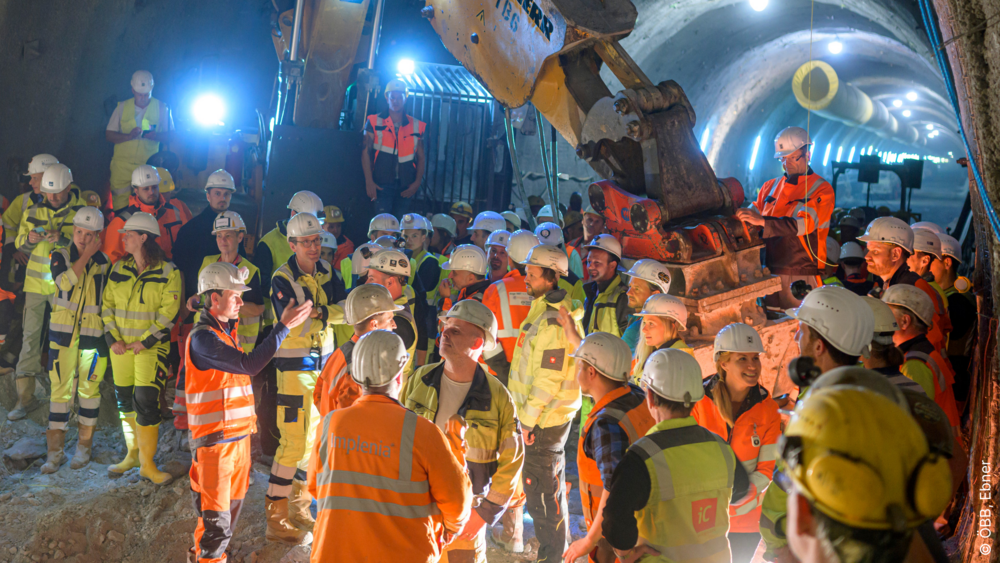A significant milestone on the way to the completion of the Semmering Base Tunnel was the first breakthrough which took place last week. iC has been playing a major part in this project for 16 years, through all planning phases and undertaking multiple roles including planning, contract management, construction coordination and geotechnics.
Almost nine years after the start of work in the Fröschnitzgraben section (construction lot SBT2.1) and seven years after the start of work in the Gloggnitz section (construction lot SBT1.1), another major milestone has been reached on the way to the completion of the Semmering Base Tunnel: the first breakthrough from one section to the other. The driving branch coming from Gloggnitz has precisely hit the driving branch already dug by the Fröschnitzgraben.
From the iC consulenten tunnelling team, we are proud that we were able to contribute to achieving this milestone as a team with other engineering offices in planning, construction management, as planning and construction coordinator and in geotechnical construction supervision. In the process, about 1,600 metres were covered with excavator and blasting driving, away from the construction site in Göstritz, and more than 8,000 metres with the tunnel boring machine "Carl" away from the Fröschnitz trench. At the beginning of last week, the first connection between the two construction sections could now be made. At the breakthrough point, our engineers and the miners met the cutting wheel of the tunnel boring machine, which was still in the tunnel in the Fröschnitzgraben section. A narrow passage in the cutting wheel allowed the crews of the two construction sections to meet in the tunnel for the first time and celebrate the success together.
The tunnel is being built simultaneously from five locations and a total of 14 drives. Five of the 14 drives have now been completed. More than 24 kilometres, or almost 90 % of the total 27.3 kilometres of the twin-tube tunnel have already been excavated. The "interior work" has already begun in 2020, during which the tunnel will be lined with a concrete inner lining. This will be followed by the railway equipment with tracks, lines and technical installations before train journeys are possible. Commissioning is planned for 2030.
For us, reaching this milestone does not mean that we will stop our activities there. With metres of tunnel still to be driven, we as engineers, as well as all other project participants, are still very challenged due to the geotechnical complexity and the expected water occurrences. The same applies to the interior work that still has to be done and to the further handling of the construction contract.




